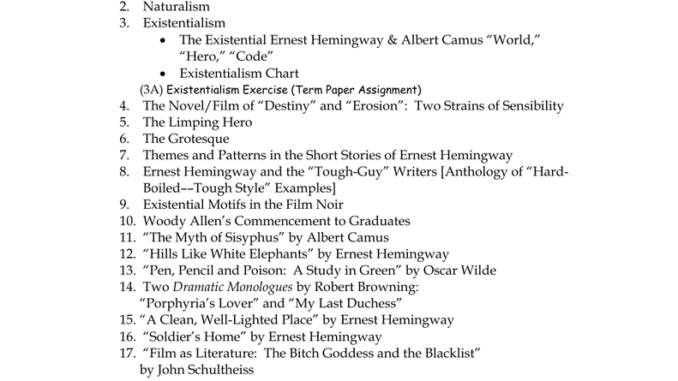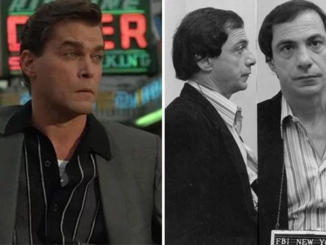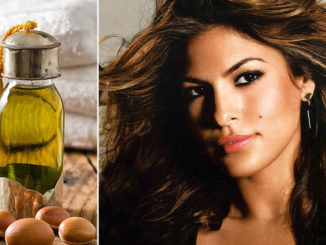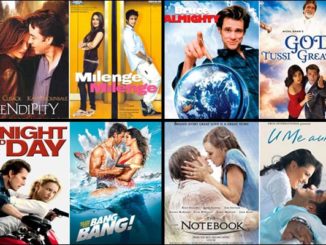
Crazy Irishmen Embarrassing Pasadena Society
There was a time when Hollywood was just a bunch of Manzaneta bushes parked on a steep semi-arid hill. And at that same time, circa 1912, the movie industry was housed in Pasadena, California and New Jersey. This was before the fame of Charlie Chaplin and Fatty Arbuckle and the explosive public awareness of the movie industry in the early 1920’s. Before the Fairbanks family and Clara Bow were famous, the movie industry was a bunch of (largely Irish extraction, before the Russian Jews came to town) entrepreneurs, is what you would call them today –with cameras, scripts drawn up on a nightly basis and horse-wise actors who every morning got up in Pasadena, made their way across the Arroyo Seco, (where the Rose Bowl is today) and shot movies in the high desert of what would become “beautiful downtown Burbank”. When they were not shooting westerns and exterior shots in the open, they were using Pasadena as a backdrop for costume dramas. (See picture below of DW Griffith’s costumed cast during that time.)
My Grandfather, Ulmont Healy was one of those horse-wise cowboys. He was from Wisconsin and had a yearning for the theatre. He would later tour the nation with a theatrical troupe, but this was his first job outside of Wisconsin. He had not yet married. He had not yet gone to France as a doughboy as a member of the American Expeditionary Forces. He took care of horses on the caissons in Northern France in 1918.
At this time, he was still a young man on an adventure. He parleyed the horse sense into a job with these movie makers, and his hopes came true. He ended up getting a new classification as “actor”, making this new “high tech” business called motion pictures. His love for the theatre and his practical horse skills merged into the luckiest job a young guy could ever get (as far as he was concerned). Ulmont got to become a real working actor because of his love of horses. Because of this, he also ended up walking up and down the elegant streets and stairways of Pasadena in period costumes and making historical movies too.
George Patton’s Family Looked Down on These “Noisy Carousing Young Men”.
These events and a charming story with a white horse named “Midnight” would be memorialized in a Reader’s Digest article in the 1950’s, authored by my Ulmont, but there is much more to that story, described in this article.
Initially Pasadena Society let these movie makers into their community. Pasadena families, largely initially built from post Civil War Southern Gentry and other rich families from the East and Midwest (like the Wrigleys), eventually grew tired of this army of thespians and did not really appreciate this group of men inhabiting their pleasant palacial homes and serene avenues. Pasadena was large estates and beautiful homes along next to the homes of the servants who worked for these families. George S. Patton’s family had a ranch in the Pasadena area. These movie makers were just guys trying to invent a new industry and as it turns out, help invent a new art form that would become what it is today, But at the time, they were just viewed as rough, loud, young men who roamed around at alll hours, drinking and carousing, and had all these strange new machines. They were making films like the one pictured below. They ended up being called an embarrassment. Probably the best movie to use to draw this picture would be “The Unsinkable Molly Brown”. If you have seen it, you will remember how Denver Society reacted to Molly and her husband. At any rate, guys like D.W. Griffith and others were making the “blue bloods” squirm. More on that later.
“I shot at myself as an Indian in the morning, then I shot at myself again as a Cowboy in the afternoon.”
Ulmont would tell family of how their shooting days would go. The shooting crew would make it over to the desert west of Pasadena (where 134 goes through, right around where “The Tonight Show” is shot at the NBC Studios). He would get a real twinkle when he told us how the shooting would go: “These were silent movies remember, so we would get our horses and paint them up like Indian horses, and put on our Indian costumes. We would charge in one direction shooting arrows and rifles. Then we would have lunch. Then in the afternoon, we would take care of the horses, change their appearance to look like Cavalry soldiers horses, then we would put on our cavalry and cowboy costumes and shoot at the imaginary group of Indians going in the other direction. Basically we would shoot at ourselves going each way. The same people would be the Indians and the Cowboys.”
“Midnight was a White Horse, but he was Bloody Red with Cactus Needle Wounds.”
On one shooting day, the hands were taking care of the horses and noticed the “big white wild one” was not to be found. Ulmont went looking for him. After going through a couple draws, he saw the white horse caught in a stand of cactus. He was extremely bloody as his movements were just giving him more spikes. After awhile the horse was just terrified and immobilized. Ulmont came up on him. He was a quiet, long and tall handsome cowboy type as a personality. He came up slowly on the horse to calm him. He could see the look of terror in his eyes and all the numerous cactus wounds all over his body. The cowboy with him suggested that they just put him down with a pistol shot right then. He did not look like he could survive. Besides, who would sit there and pull each and every spine out of his blood body?
It turns out, Ulmont would. He insisted that they not shoot him. The subtext here is that this horse was such a wild horse that he was not really appreciated by his caretakers. He was so unruly and aggressive that he was deemed not to be worth the effort. “If you save him, you still have that wild horse that’s not worth the trouble!”
Ulmont put up his hand in silent protest. He said, “Go on back, tell them I’m taking care of “Midnight”. Like naming a tall guy “Shorty”, Ulmont named his white horse a dark horse name. For hours Ulmont, standing in the draw of this desert area that would become Burbank, carefully pulled each cactus spine out of Midnight’s hide. He carefully proceeded trying to avoid as much pain as he could. The animal stood quietly and tried to remain motionless. He quivered with pain and the flies were landing on the open sores. As the sun roasted the pair, Ulmont knew that he was going to have to save this horses’ life. Either he would succeed, right then, under the baking sun of Southern California, or the horse would thrash about, free itself and cause even more bleeding, then he would run into the desert and get himself lost and bleed out within a few days, OR he would simply be “put down” by the crew.
The Beginning of a Great Relationship –
As Ulmont put it, this was a momentous time in his life. The horse episode made his movie-making, ranching job even more memorable. It was one of those moments that had lots of meaning. He brought the horse back to the corral, and ministered to him through the night. The next day, Ulmont and the rest of the crew were having coffee before that day’s shooting. They were laughing and chatting. Ulmont was leaning against the corral. The day was about to become even more memorable.
The crew suddenly went silent. They were all smiling at something over Ulmont’s shoulder. Ulmont felt the breath of a horse on his back. The formerly wild and crazy horse was now a sweet, compliant,”thankful” animal. He was coming to have a moment with the man who had saved his life. Ulmont smiled and patted him on the nose. After that they were fast friends, and the horse was with Ulmont every day. It was the beginning of a great relationship. It was also the beginning of Ulmont deciding he was going to pursue acting.
As the pressure on the movie-makers increased, they realized the local constabulary and law enforcement personnel were going to make it impossible for them to keep on doing business in Pasadena. In the beginning people thought it was nice to have their elegant homes photographed and made part of the new film world. But, as time went on, they realized Pasadena was not going to be the future of the movie business. One way or the other, through zoning or harassment, these men were going to go somewhere else. If you want to make something happen, Pasadena has the will. Check out the history of the Rose Parade and Rose Bowl. On the contrary, if they want something NOT to happen, they also had the will and the way to make them cease and desist.
“Hooray for Pasadena” –
So, as time passed, the movie makers eventually moved along. History was going to happen somewhere else. They moved their efforts to the hills northwest of Los Angeles. Still open and undeveloped, the residential development of the place called “Hollywood” had not yet happened. It was just over the hill from that Burbank desert area, so it made sense. Stop and think, it feels like it was all meant to be. After all, how could a song work if the lyrics went: “Hooray for Pasadena!” It just doesn’t bounce with the same kind of carefree merriment.
W.C. Fields would settle in Pasadena, and Einstein loved the place. Pasadena kept its identity and still has its own public image, which has been maintained over the scores and scores of years. I ended up attending a school in Pasadena, and we would make money working on the Rose Bowl every year selling snacks and drinks. Pasadena has never regretted moving those guys out of town. You can see why.
Technically, movies don’t have to have a PLACE where they could be made, but Hollywood did make sense as the next 15 years would unfold. Southern California’s sun and weather made it a perfect place for shooting and partying. The 20’s burst with technological development. In the 20’s people were getting refrigerators, telephones, cars, indoor wiring and indoor plumbing. It was a time of change unlike any other. Movies and Movie theatres sprang up all over America, and then sound in movies was invented just when the great depression would give people a reason to attend the movies even more. As people would say: “Maybe life was miserable outside, but we could go inside to see the movies.”
The Legacy Continues –
Ulmont went back to Wisconsin to care for his dying Mother, and then went off to Europe to fight in WWI. He ended up getting a back injury in France. You guessed it. He was minding the horses. The American Army was not fully mechanized in World War I. Caissons, vehicles with cannons on them, were drawn by horses, and soldiers were needed to take care of them. It felt more like the Civil War for soldiers like them.
When he returned, he got married and had three daughters. He never returned to Southern California, but he did tour the nation with a theatre troupe and inspired one of his daughters to become a Thespian. Ulmont would help her get her first job in the professional theatre after graduating from the Univesity of Iowa where she had befriended the young playwright, Tennessee Williams. She had a full life on stage and worked steadily to the age of 85. She would end up in Disney movies and acted in a film “Wait for Spring, Bandini” shot in Boulder, Colorado with Joseph Montegna and Faye Dunaway.
The legacy of Ulmont’s love of the written and the spoken word continued, when In the 1950’s, when he was in his 60’s, Ulmont penned the article for Readers Digest to fix that story in the desert as a snapshot in time. He always looked back on those events as a moment in history that had its own uniqueness.
When Pasadena was “Hollywood”, Umont was there — being an Indian, being a Cowboy, being an actor shooting movies, saving a suffering animal’s life and coming up with a unique vision for his future. This story is a little slice of life that provides a tableau of a time in America that is now long gone, but still treasured. Below is a description of a photo of one of DW Griffith’s 1912 movies.
1912, D.W. Griffith filmed the below movie on the grounds of the Fenyes Estate (now the Pasadena Museum of History) at 470 West Walnut. The film was listed in the Fenyes diaries as “The Queen’s Necklace.” However, Griffith’s biography lists no such film. It is very possible that they changed the name of the film once it was released. Research is on-going by the Pasadena Museum of History to identify the actual film name.
Proudly WWW.PONIREVO.COM



